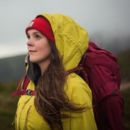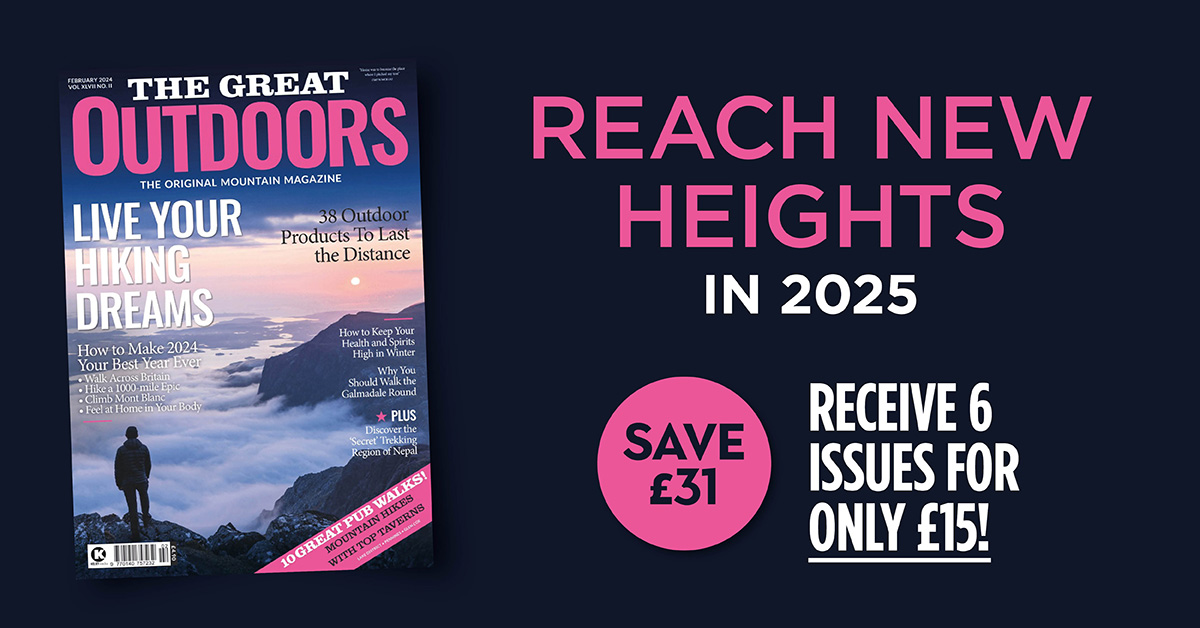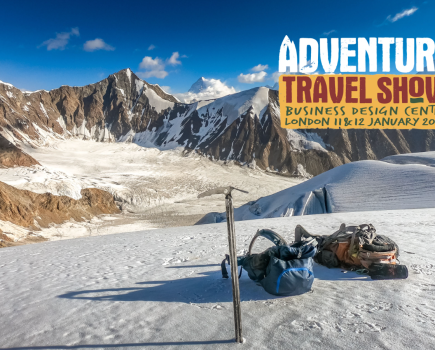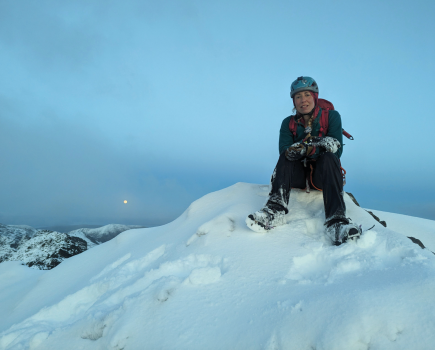Kate Sielmann shares hard-won trekking tips – with a little fear-busting humour – so more people can confidently adventure at altitude.
Do you know how to lace your trail shoes if you have a high arch or your big toe won’t stop banging into the end of your hiking boot? What about how to pee while roped in on a ledge with two guys? Perhaps how to deal with a period at 6,000m? Or exercise efficiently to develop mountain endurance? Well, if the answer to any of these is ‘no’, Kate Sielmann has you covered with her one-to-one training and social media tips and tricks.
The 33-year-old Mountaineering and Trekking Coach and author grew up in Zimbabwe. Her first taste of climbing was at the bottom of her garden where untamed tendrils of nature spread. Here, she’d scamper up trees to escape legavaan and snakes. Between her home bases of London and Bad Oldesloe (Germany), her adult explorations at higher altitudes are just as exciting – “except now I’m not climbing away from something but towards it instead.”
Main image: Kate Sielmann on the Cuillin Ridge, Isle of Skye. | Credit: Kate Sielmann.
Here, Kate tells The Great Outdoors about the failures which have shaped her mountain career, why sexist comments fuel her fire and how she ‘cracked the system’ to achieve incredible things in high places.
How did you discover the outdoors and what inspires you to keep getting out there?
Growing up in Zimbabwe meant my days were spent outdoors exploring our expansive garden that had a well-looked-after, civilized area, and at the bottom of the garden, a section that was wild and untamed. There were often monkeys roaming around, a pair of protective and fierce Eagle Owls nesting in the trees who’d swoop down on you if you came too close plus a resident legavaan – a giant lizard similar to a Komodo Dragon but smaller and less venomous.
I started building my climbing skills in that wild part of the garden, racing up trees like a rat up a drain pipe to get away from the legavaan or one of the many poisonous snakes that lived in the wilder parts of the garden. The adventure of it all always felt exciting, as it still does to this day. Except now I climb bigger things than a tree and thankfully I’m not climbing away from something but towards it instead.

Climbing Breithorn Orientale & Centrale.
Credit: Kate Sielmann
The outdoors keeps us honest – honest about who we are and what we are capable of, mentally and physically. It doesn’t matter whether you’re female/male, rich/poor, or have kids or not – the outdoors takes you for who you are in that moment. That’s the part that keeps inspiring me to get out there and let go of the story of my life and honestly live in the moment.
And the bigger inspiration behind that is as I explore the outdoors and in turn my mind and physical capabilities, I become a better person but more importantly, a better mother and wife which in truth is the purpose behind all that I do.
Can you tell us about some of your adventure highlights?
Rather than highlights, I’ve experienced moments that have deeply impacted me and the way my outdoor life has evolved. I’ll share a few with you. In May 2015, somewhere along the Ausungate Trail in Peru, we had stopped at a hut for the night and somehow ended up playing Jenga with the carer of the house. We couldn’t communicate because of the language barrier but entire life stories and emotions were conveyed through that game of Jenga. There were moments of complete unity and frustration as the blocks fell!
Later, in August 2016, 200m below the summit of Elbrus, I sat down and gave up. After a few minutes and a moment to think rationally, I asked myself if I could take just “one more step”. And after that step, I asked myself the same question again. Many steps later, I stood on the summit of Elbrus. Since that moment, I’ve never not been able to take one more step.
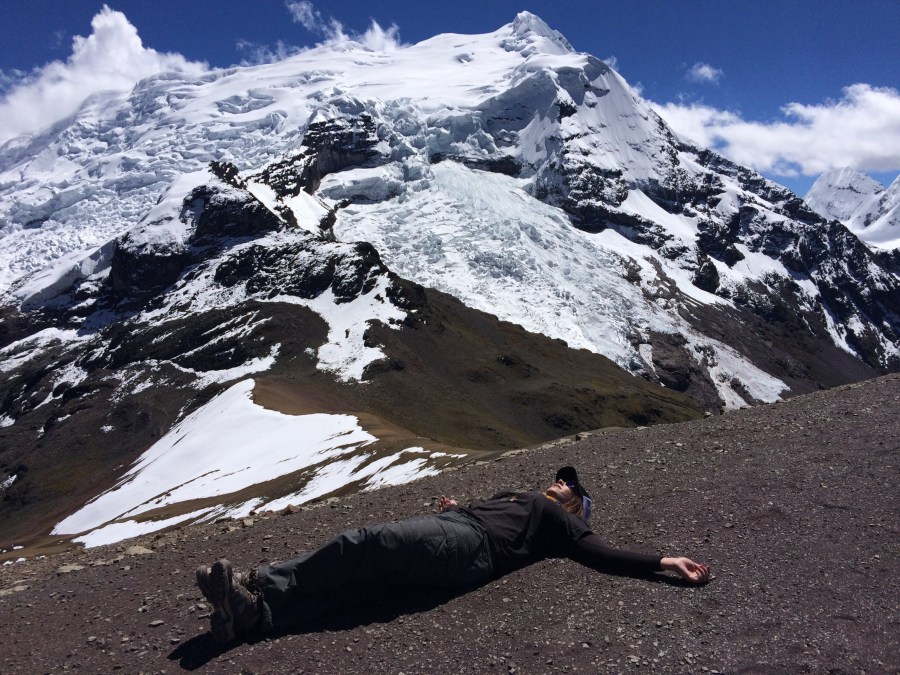
Somewhere along the Ausungate Route, Peru.
Credit: Kate Sielmann
Likewise, in January 2018, it was such a moment to be standing on the summit of Aconcagua in Argentina with my husband, feeling so strong that I could have kept going for days. Often people stand on the summit feeling completely drained and exhausted but to stand on a summit feeling full and powerful is a different experience – one that I am constantly pursuing, for myself and my clients.
In July 2022, I was on the side of the icy, 50° West Face of II Naso Del Lyskamm in the Alps. On that trip, I had started to lose two toenails and in a moment on that slope, I didn’t kick my crampons in properly and slipped two meters or so. Had I not been roped in, that slip would have been a lot further and likely fatal – all because I was trying not to bang my toes again. A mistake and a lesson I will never forget.
Most recently, in February 2023, on the final pitch on Tunnel Vision on Aonach Mòr in Scotland, clustered together with my guide and another climber, I looked up at the crux of the route and felt nothing short of terrified. It was vertical with thin and unforgiving ice. Instead of letting fear take over, I looked at both men and told them that this section made me feel nervous and scared but that I didn’t doubt my ability to get through it. At that moment, giving a voice to fear, something that is often seen as weakness, was a power move as the other climber also admitted to being scared and together we supported each other and moved through the crux with nothing short of strength and courage.
Your coaching approach and book are all about maximum preparedness – can you recall a time when you were perhaps a little under-prepared and what that taught you?
Absolutely – in September 2015, I stood on the summit of Kilimanjaro, completely exhausted, vulnerable, and panic-stricken as to how I was going to get down in such a weak state. On the flight home, I made a vow to myself that if I was going to continue pursuing high-altitude adventures then I would never be that weak, vulnerable and unprepared ever again.
Fast forward three years and many lessons learned, some failures but mostly successes I stood on the summit of Aconcagua in complete strength knowing I had cracked the system and developed a specific and predictable method of training and preparing that would undoubtedly move me from start to summit each and every time.

Trekking in the Italian Alps.
Credit: Kate Sielmann
I had never planned on sharing that training and preparation system until my husband suggested I write a book and told me that even if no one bought it then at the very least, our daughters would have a definitive roadmap to move from their start to summit if they ever chose to climb mountains. Fast forward another couple of years and I’m grateful to say my book and coaching programs have outgrown all my goals and gone much further than my twin daughters.
Between nutrition, fitness, skills, and gear advice, your content is so informative. How have you trained and developed this wealth of knowledge and why is it important for you to share this with others seeking to go outdoors?
From the training perspective, I studied Sports Science at University so the depth and understanding of how the human body functions has been ingrained in me for well over a decade. The more mountain-specific knowledge was something I learned with each passing adventure.
When I first started playing around in the high-altitude world, I noticed the lack of knowledge and specific training methods for normal people wanting to pursue high-altitude adventures and so after every trip/expedition, I’d analyze my preparation and further refine my methods and ideas until they got to a point that was tried and tested and worth sharing.

On the summit of Breithorn Orientale.
Credit: Kate Sielmann
It’s cliched but for me, I truly believe that spending more time outdoors makes us better and more fulfilled people, and in a small way, that makes the world a better place. By sharing all the genuinely useful and helpful information that I’ve learned and developed along the way, I help people feel more confident and better equipped to go out and pursue outdoor adventures and in turn, make their world that little bit better one outdoor adventure at a time.
You also throw in a little humour – how important is it to you to remember to respect but also enjoy the outdoors and steer clear of becoming too fearful?
The respect that we should have for the outdoors is like a good marriage or relationship – if you don’t respect your partner then it’ll never work. If we don’t respect the outdoors then we will never learn or experience the utter joy and freedom of feeling the wind on your cheeks as the sun rises over the distant horizon.
In general, there are two types of fear when we talk about the outdoors – there is fear through lack of knowledge and uncertainty and then there is fear because you’re in a dangerous place in dangerous conditions that can be potentially life-threatening. The latter is to be avoided at all costs while the former is to be safely played with and developed.
Can you speak to your own experience of being a woman in the outdoor industry and why women-specific content is helpful to make the outdoors a more approachable and safe space for all?
I love being a woman in such a male-dominated industry – very few people expect anything extraordinary from us so when we do come out and trailblaze, it always feels and looks that much more epic.
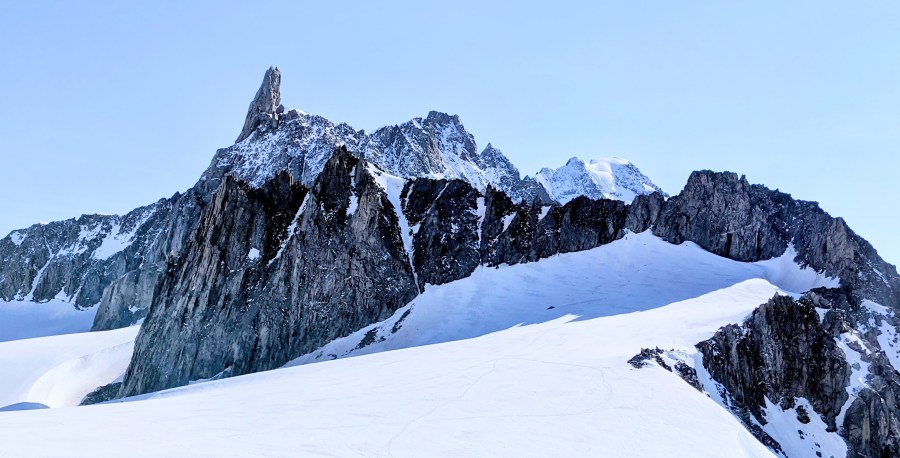
The summit of Aiguilles Marbrées.
Credit: Kate Sielmann
I’ve had so many comments in the past about being female and how unexpectedly strong or fit I am but comments like that just fuel my fire to be even better and stronger and help other women do the same.
Having more women-specific content is so important because it answers women-specific problems like how to have a pee while being roped in on a ledge with two guys. Or how to deal with a period at 6,000m. It’s crazy to assume and generalize that outdoor information should be the same for everyone – making women-specific content helps answer all those little questions and gives women the courage to go and try in an otherwise male-dominated industry.
You can follow Kate Sielmann’s adventures on Instagram.


